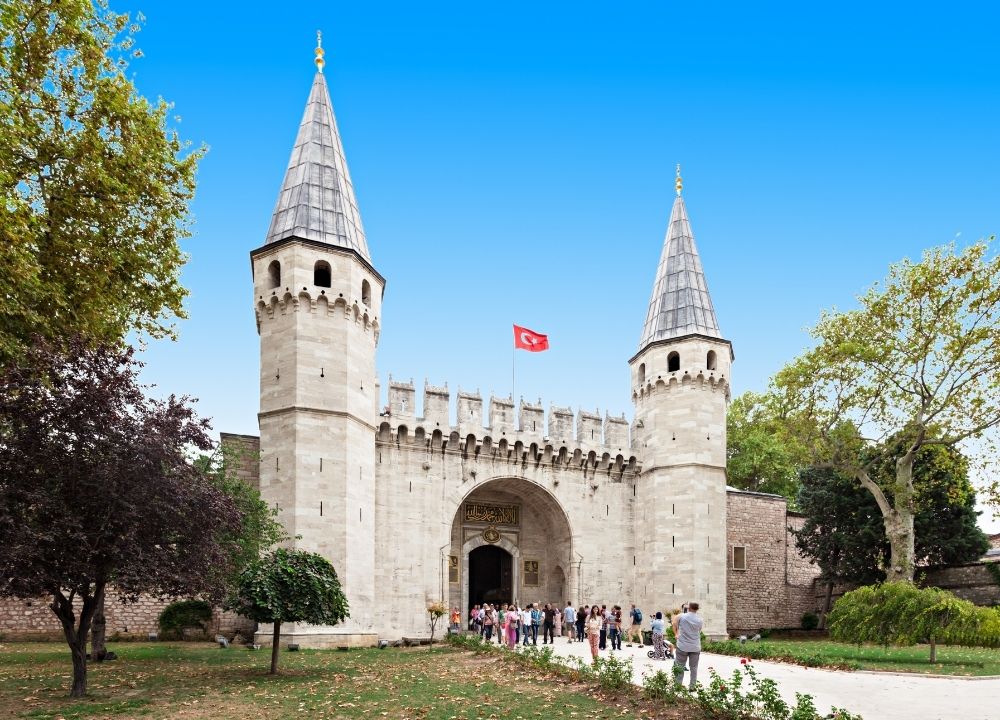Topkapi Palace: Istanbul's Historical and Cultural Heritage

Topkapi Palace served as the administrative center of the Ottoman Empire and the residence of the sultans for 400 years. Opened to the public in 1924 as a museum, today it is one of the most important historical and cultural buildings in Istanbul. The palace offers a fascinating experience to its visitors with its historical buildings, collections and extensive gardens.
Topkapi Palace is a unique building that reflects not only the history of the Ottoman Empire but also the cultural heritage of Istanbul. The palace's magnificent architecture, rich collections and historical significance offer visitors an unforgettable experience. Anyone traveling to Istanbul is advised to take a journey into the depths of history by visiting this magnificent palace.
History
Topkapi Palace was built in 1459 by Sultan Mehmet the Conqueror. The palace, which began construction shortly after the conquest of Istanbul, was built on the ruins of the great palace of the Byzantine Empire. In addition to being the administrative center of the Ottoman Empire, the palace also played an important role as a complex where the sultans lived with their families. In the 19th century, with the construction of Dolmabahçe Palace, the official function of Topkapı Palace ended, but its historical and cultural importance continued.
Architecture and Departments
Topkapi Palace consists of four main courtyards and many important buildings. The architecture of the palace exhibits exquisite examples of Ottoman art and architecture.
First Courtyard (Regimental Square): This courtyard, where the entrance to the palace is made, attracts attention with its large gates and large areas that fascinate visitors. In this courtyard, there are buildings such as the Church of Hagia Irene and the imperial stables.
Second Courtyard (Divan Square): This courtyard houses the Divan-ı Hümayun, where the sultan conducted state affairs, and the Tower of Justice. The kitchens of the palace are also located in this courtyard and the kitchen utensils on display here offer visitors clues to palace life.
Third Courtyard (Enderun Courtyard): This courtyard, where the sultan's private living quarters are located, includes important sections such as the Treasury Department, the Harem and the Department of Sacred Relics, where holy relics are displayed. This courtyard is also home to the Enderun School, where the Ottoman education system was practiced at the highest level.
Fourth Courtyard (Tulip Garden): One of the most spectacular parts of the palace, the fourth courtyard mesmerizes visitors with its marble terraces, pools and pavilions. Elegant buildings such as the Baghdad Pavilion and the Revan Pavilion are located in this section.
Sections of the Palace
Birun (Outer Palace): Includes service buildings and guard posts.
Divan-ı Hümayun: The administrative center of the state.
Enderun: Palace School and the sultan's private quarters.
Harem: The private area where the Sultan and his family lived.
Featured Buildings
Bab-ı Hümayun: The main entrance gate.
Babüsselam: The door leading to the second courtyard.
Babüssaade: The door leading to the third courtyard.
Hagia Irene Church: Byzantine church located in the first courtyard.
Tower of Justice: Located in Divan Square and one of the symbols of the palace.
Department of Sacred Relics: The section where holy relics are exhibited.
Harem: The private area where the sultans and their families lived.
Baghdad and Revan Pavilions: Classical Ottoman pavilions located in the fourth courtyard.
Harem
One of the most mysterious and intriguing parts of Topkapi Palace is the harem. The harem is a living space where the sultan's family and concubines lived, governed by strict rules. The rooms, baths and halls in the harem provide important information about the Ottoman lifestyle and the hierarchical order within the palace. The harem is also a reflection of the social and political structure of the Ottoman Empire.
Holy Relics
Topkapi Palace is home to holy relics of great importance to the Islamic world. Relics such as the personal belongings of the Prophet Muhammad (PBUH), his swords and the sacred chest offer visitors a profound spiritual experience. These relics are carefully preserved in the most sacred and revered parts of the palace.
Treasury
The palace's treasury is filled with priceless jewels, gold objects and precious stones that reveal the wealth and splendor of the Ottoman Empire. World-famous artifacts such as the Khashoggi Diamond and the Topkapı Dagger are among the most valuable pieces of this treasure collection. The Treasury also showcases the rarest examples of Ottoman art and craft.
Visit Information
Topkapi Palace is closed on Tuesdays. Ticket offices open at 09:00 and close at 17:00. Visitors can visit the Harem section inside the palace with a separate ticket. The Harem was used as the private living quarters of the Ottoman sultans and is one of the most interesting parts of the palace. The museum is closed on the first day of religious holidays and New Year's Day (Millisaraylar).


